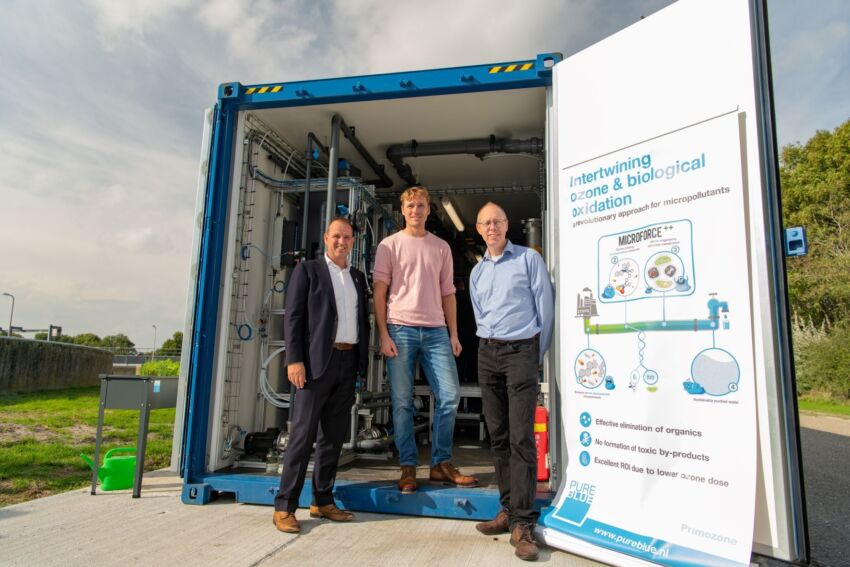What does it take if you want to reuse treated wastewater from a sewage treatment plant (RZWI) like in Ritthem in agriculture and horticulture? A consortium of HZ University of Applied Sciences, Wageningen University and Research, waterschap Scheldestromen and PureBlue will investigate this as part of the Effluent Fit 4 Food (EF4F) project.
What does it take if you want to reuse treated wastewater from a sewage treatment plant (RZWI) like in Ritthem in agriculture and horticulture? A consortium of HZ University of Applied Sciences, Wageningen University and Research, waterschap Scheldestromen and PureBlue is going to investigate that as part of the Effluent Fit 4 Food (EF4F) project.
The company from Kapelleburg has placed a research container on the site near the RZWI. On Tuesday, Pureblue director Angelo de Mul and water board member Gert van Kralingen officially opened it.
Irrigation water
The project partners hope EF4F's research will help increase the amount of good-quality irrigation water for agriculture and horticulture, thereby reducing dependence on groundwater. This is important because, as this summer proved again, there are increasingly frequent prolonged periods of drought in the Netherlands. Shortages of irrigation water are also becoming more acute in Zeeland. Moreover, salinisation is a problem. "This innovative research is part of the national study on removing medicine residues and other microparticles from effluent. In cooperation with our knowledge partners, we are looking for the right solutions. Our goal is that in times of drought, our treated wastewater will have value and it can be made available to agriculture and horticulture in a safe way," Van Kralingen said.
Minimum quality
In 2020, the European Union set minimum quality requirements for wastewater to be able to be (re)used for irrigation in agriculture and horticulture. The research parties are looking at whether and how the water from the RWZI in Ritthem can meet these requirements.
Equipment has been installed in the container in Ritthem to test whether and, if so, what contaminants are in the water after treatment. "It is especially challenging to determine what to analyse for," said HZ researcher Bart Letterie. "There are many different types of micropollutants: medicine residues, hormones and drugs. This all gets into the sewers. We analyse as broadly as possible, on thousands of parameters. The next step is to interpret the data to then determine how efficiently the techniques work to remove the pollution."

